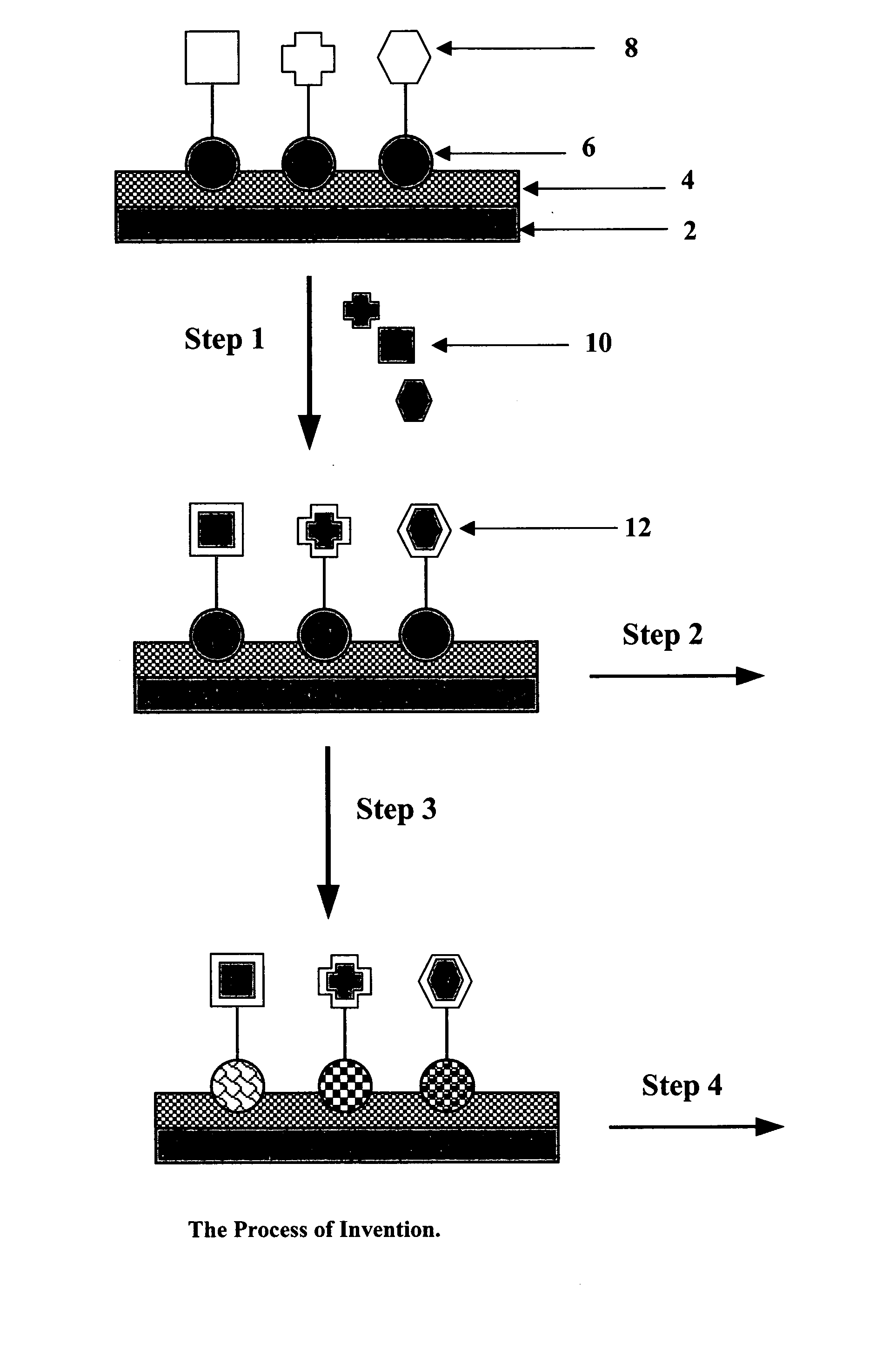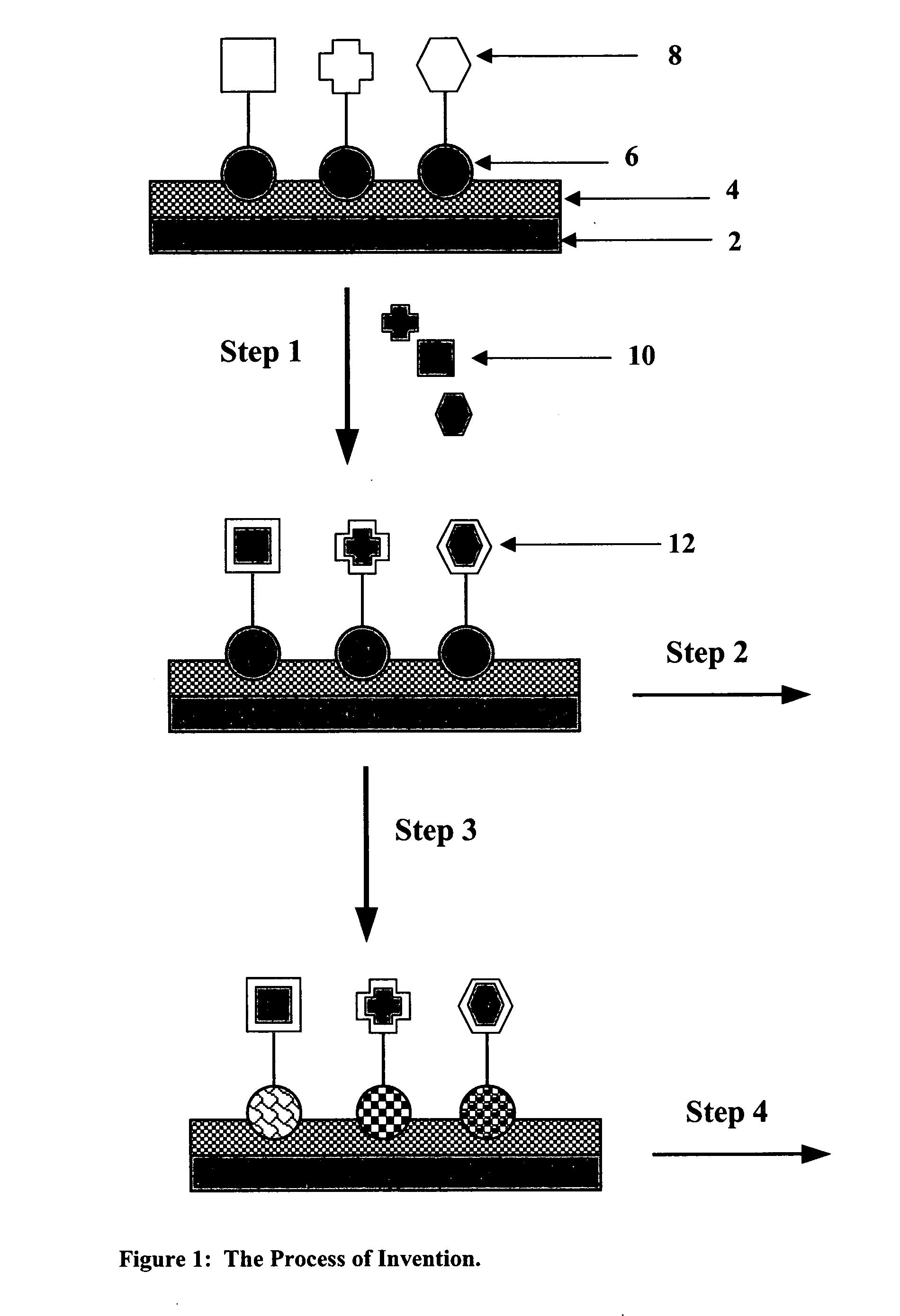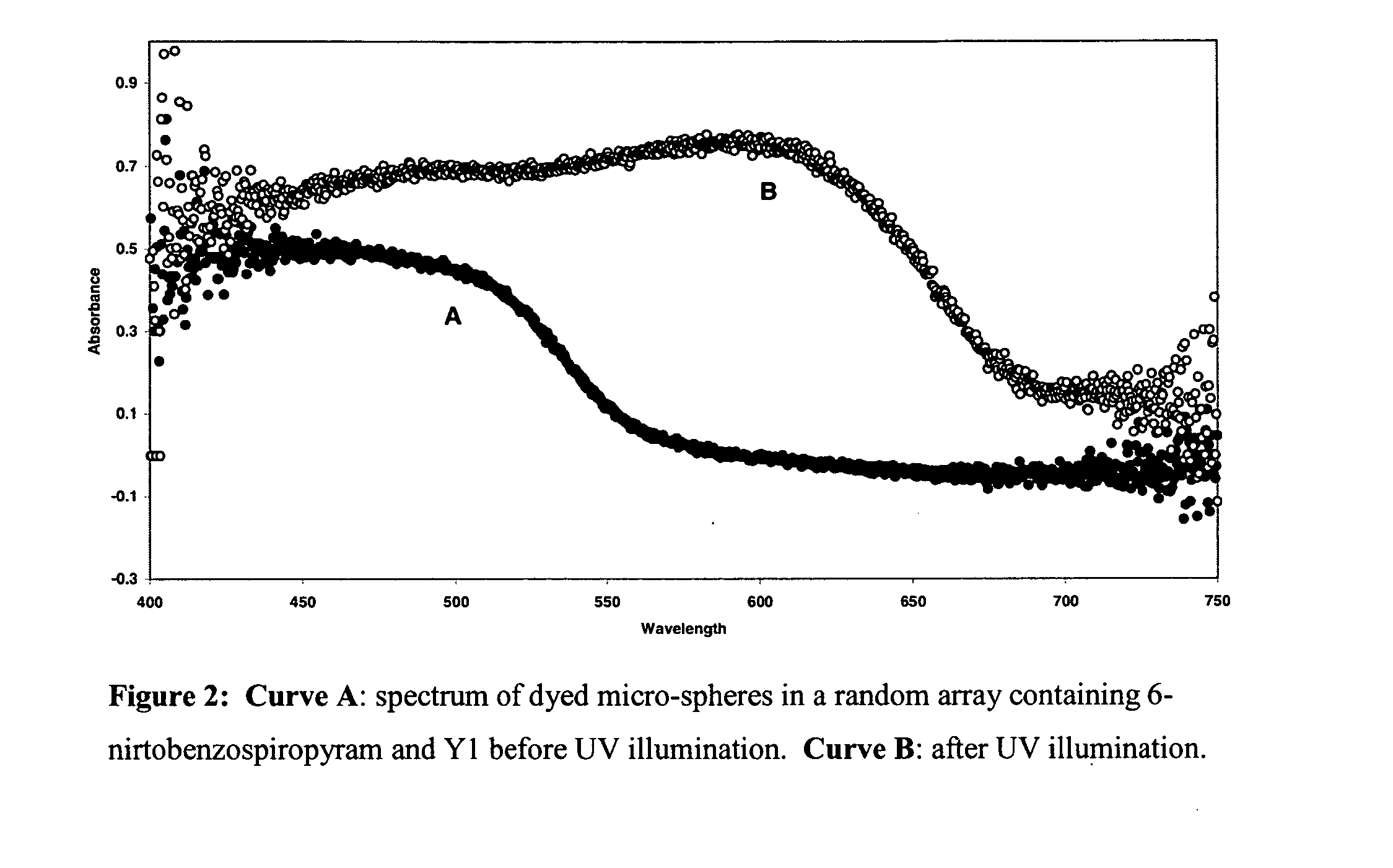Photochromic dyes for microsphere based sensor
a microsphere and sensor technology, applied in the field of microsphere based sensor technology, can solve the problems of difficult to maintain the uniformity of the hole size and spacing of the sensor, the range of hole sizes and spacings produced by this method is limited, and the processing steps are complex and expensiv
- Summary
- Abstract
- Description
- Claims
- Application Information
AI Technical Summary
Benefits of technology
Problems solved by technology
Method used
Image
Examples
example 1
This example illustrates an array of micro-spheres containing a photo-chromic dye.
6-Nitrobenzospiropyran (0.1 grams) was dissolved in a mixture of 0.2 grams of toluene and 2.0 grams of acetone. 2.5 grams of an aqueous suspension of carboxylated polystyrene micro-spheres (4.2% solids and 9.5 μm diameter from Interfacial Dynamics Corporation, Portland, Oregon) was combined with 3.0 grams of acetone.
The above suspension of polystyrene micro-spheres in water and acetone was added to the solution of 6-nitrobenzospiropyram in acetone and toluene. The mixture was then filtered using a porous cotton filter (200 μm mesh size) and the filtrate was poured into a dialysis membrane tube (from Spectra / Por, 12,000-14000 molecular weight cutoff). The sample was washed with distilled water for one hour. After washing, the sample was once again filtered using a similar porous cotton filter, and the filtrate of dyed beads (containing 6-nitrobenzospiropyram) was collected.
50 μL of aqueous gelati...
example 2
This example illustrates a array of micro-spheres containing a photo-chromic compound in combination with a non-photochromic compound.
6-Nitrobenzospiropyram (0.1 grams) and 0.2 grams of dye Y1 were dissolved in a mixture of 0.2 grams of toluene and 2.0 grams of acetone. 2.5 grams of an aqueous suspension of carboxylated polystyrene micro-spheres (4.2% solids and 9.5 μm diameter from Interfacial Dynamics Corporation, Portland, Oreg.) was combined with 5.0 grams of acetone. The remainder of the procedure for preparing dye-loaded micro-spheres and coating these micro-spheres to create an array was similar to Example 1 except this time the array contained a mixture of dyed beads and non-dyed (clear) beads.
Color type and color levels in microspheres were analyzed using a hybrid analytical system comprising three parts: optical microscope, fluorescence microscope, and ultra-violet visible (UV-VIS) micro-spectrometer. This system uses high-intensity light, lenses, mirrors, apertures a...
PUM
| Property | Measurement | Unit |
|---|---|---|
| mean diameter | aaaaa | aaaaa |
| mean diameter | aaaaa | aaaaa |
| diameter | aaaaa | aaaaa |
Abstract
Description
Claims
Application Information
 Login to View More
Login to View More - R&D
- Intellectual Property
- Life Sciences
- Materials
- Tech Scout
- Unparalleled Data Quality
- Higher Quality Content
- 60% Fewer Hallucinations
Browse by: Latest US Patents, China's latest patents, Technical Efficacy Thesaurus, Application Domain, Technology Topic, Popular Technical Reports.
© 2025 PatSnap. All rights reserved.Legal|Privacy policy|Modern Slavery Act Transparency Statement|Sitemap|About US| Contact US: help@patsnap.com



